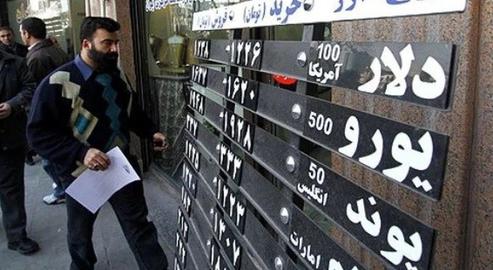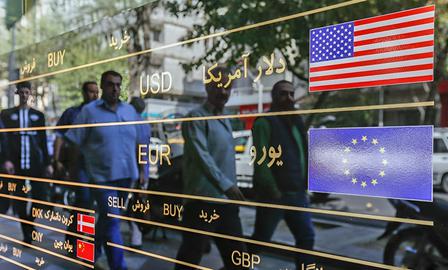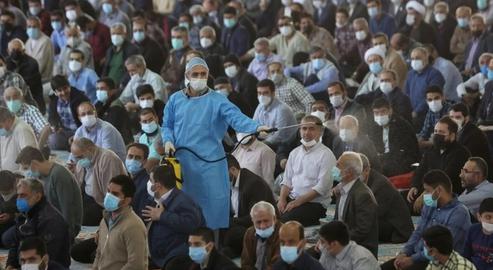A head of state’s performance during their first 100 days in office is often considered pivotal. Not because this very short window is commensurate with the time needed to achieve their economic goals, but as an indicator of their overall approach.
It’s been customary in Iranian political circles appraise a president’s first 100 days since the time of Hassan Rouhani. On entering office in August 2013, Rouhani – somewhat unrealistically – promised to resolve Iran’s economic crisis within that time period. Because he had made the promise, Rouhani then held himself to account by publishing a report on his performance 100 days later. Efforts toward a nuclear deal were the headline “achievement”.
Eight years later, the JCPOA talks are dominating discussion about Ebrahim Raisi’s first 100 days. There is a lot more at stake, though. The key difference between Raisi’s initial three months in office and those of his predecessor is that now, there is even less hope – and a lot less accountability – than there was in December 2013.
***
Vienna's Message Read in the Streets
The economic performance of the 13th government in its first 100 days is inextricably linked to the nuclear issue. Today European parties to the latest negotiations called Iran’s latest proposals in Vienna “unacceptable”; a “violation” of the tentative new agreements reached before Raisi took office. The Iranian economy and thus the Iranian people will be the first to lose out if talks in Vienna fail.
In a televised interview on Sunday night, Ebrahim Raisi tried to convince audiences otherwise. The government, he said without elaborating, had “a plan” to neutralize and lift sanctions. If there is a plan, it ought to be set in motion soon: in recent days a jump in the price of the dollar to more than 30,000 tomans – a psychological threshold, like the first 100 days, but noteworthy nonetheless – has been recorded, with the price of the dollar having surged by more than 18 percent since Raisi took office.
This has sent out a wider signal of instability to the whole Iranian economy. It has affected the price of imported goods, raw materials, services and machinery needed for production, and as such also the cost of goods made inside Iran.
A Little Calm Amid the Inflation Storm
On the other hand, the Statistical Center of Iran’s reports on inflation between August and November suggest that inflation is increasing at a slightly slower pace than before. The point-to-point inflation rate has, according to the official figures, gone from 43.2 percent in August to a slightly less disastrous 35.7 percent in November. The annual inflation rate, which was 45.2 percent in the 12 months to August this year, stood at 44.4 percent in October.
But these latest figures, too, are deeply worrying. Monthly inflation in November was 2.5 percent, lead to concerns about resurgence in the remaining months of the year, while the average inflation rate in food and beverages remained above 60 percent. Lower-income families are still struggling to put food, particularly healthy food, on the table.
The government attributes this relative slowdown in inflation hikes to its financial performance and efforts made not to rely on the Central Bank for bailouts. Despite this, Central Bank reports indicate that both liquidity and the monetary base have been steadily increasing.
Borrowing With the Banks’ Mediation
According to the Central Bank, liquidity at the end of October had grown by more than 40 percent in a year, exceeding 4.2 quadrillion tomans (US$135bn). The monetary base’s one-year growth was 36.4 percent in October, reaching more than 5.3 quadrillion tomans ($170.4bn).
The latter is the most important. The monetary base continued to increase by 2 percent in October after a two-month pause in August and September. Though the government claims it has not borrowed from the Central Bank in recent months, the increase in the central bank's claims, along with the increase in government debt to banks, has created the suspicion that the borrowing was indeed mediated by banks.
Banks, investment companies and their affiliated funds in Iran are required to either buy government bonds or lend the government money to meet its needs. The Central Bank has more flexibility in terms of overdrafts or use of its resources. The inflationary effect of this is no different to if the government had directly borrowed from the Central Bank.
Abdolnasser Hemmati, former governor of the Central Bank and a 2021 presidential candidate, reacted last month to the government’s claims. He wrote on Twitter: “Providing for the budget deficit through pressure on banks and their funds also leads to a heavy overdraft with the central bank. That is what happened, as the figures on the monetary base in October show!"
Hemmati also announced in a tweet on Sunday, December 5 that the combined amount of government withdrawal from banks – and the banks' borrowing from the Central Bank – had reached 80 trillion tomans ($2.5bn). The current governor of the Central Bank meanwhile said his institution had bought foreign currency from the government at a discounted rate in recent months, and provided the government with rials in exchange.
The Deficit Nightmare
The budget deficit and means of mitigating it, along with the ongoing constraints imposed by sanctions, are the most important economic event of this year. The National Audit Office’s six-month performance report on the 2021-22 budget notes the government faced a deficit of 154 trillion tomans ($4.9bn), which it predicted would increase to between 300 and 450 trillion tomans ($9.6 to $14.5bn) by the end of the year.
Revenues from the sale of oil and petroleum products accounted for about 11 percent of spending; the receivables from selling government companies were less than half a percent. The sale of surplus government property, a stated focus for both Raisi and his Minister of Economy, has been hampered by administrative problems, legal obstacles and resistance from government officials, and in the first half of the year, earned the treasury less than one percent.
In his interview on Sunday night, Ebrahim Raisi also complained that his government had to pay an average of 10 trillion tomans ($321m) a month in pre-spent invoices, which meant that the bonds that the previous government sold had now matured.
A Disappointing Show
Economic policies need time to show their impact on variables. Changes registered in the first 100 days, for better or for worse, are no clear measure of failure or success. What is more important to observers and economists alike are the approaches taken.
From this perspective, the 13th government has so far performed disappointingly. The return of punitive approaches to market control, price surges and the use of non-economic methods to control prices – like setting up a "food security headquarters", and signing a memorandum with the Basij to monitor and control the market – show the 13th government has not learned from the failures of the past half-century.
On the other hand, turmoil and incoherence in the government's economic stance, although not a new thing in the Iranian executive, has reached new frontiers. Both Ehsan Khandozi, the new Minister of Economy, and Ebrahim Raisi have both stressed the importance of “predictability”. But the list of uncertainties faced by Iran’s economy has only been added to since August, and in all cases they are imposed on it by actors inside and outside the country.
Related coverage:
Fruit is a Luxury Item in Tehran
What's Happening to the Stock Exchange Under Ebrahim Raisi?
Is Tehran’s Stock Exchange Worth Resuscitating?
The Latest Economic Hallucinations of the Speaker of Parliament
Raisi’s Don Quixote Cabinet and Hopes for Economic Recovery
Iran's 'Empty Treasury' Panic is Back With a Vengeance. Who's Right?
Internal Report: Iran's Government is Drowning in Debt
The Iranian Government’s Debt Problem Can Only Get Worse Under Raisi
Deeply Religious 'Safe Pair of Hands' is Iran's New Economy Chief
visit the accountability section
In this section of Iran Wire, you can contact the officials and launch your campaign for various problems






















comments